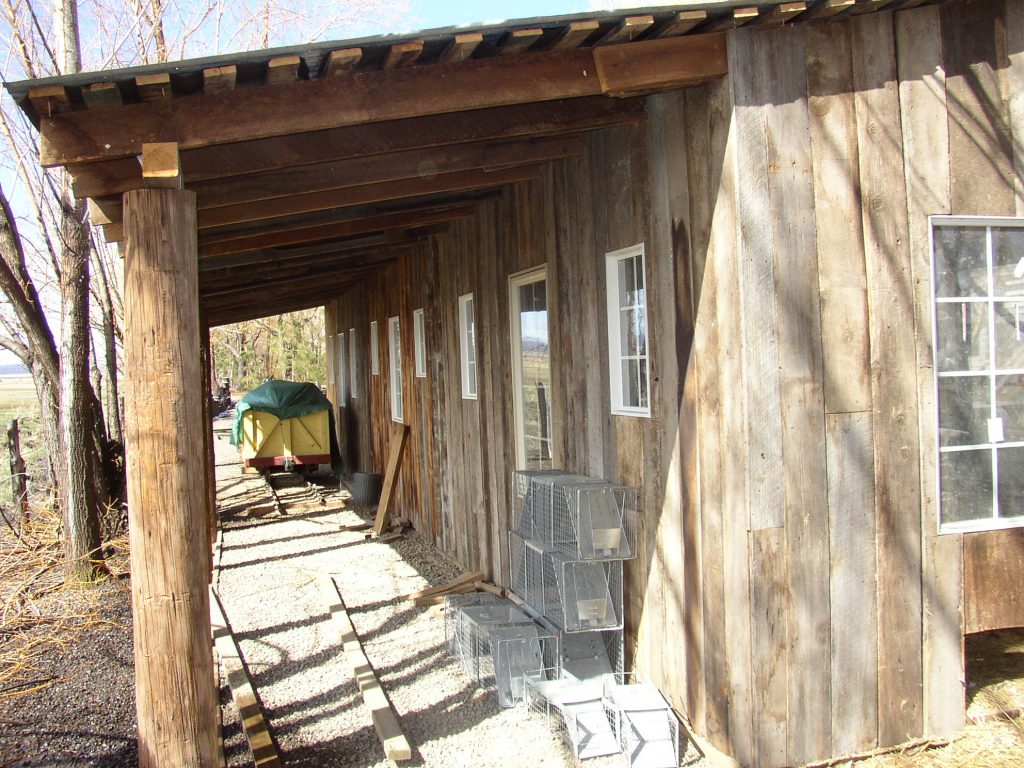TRACK INSTALLATION 2002
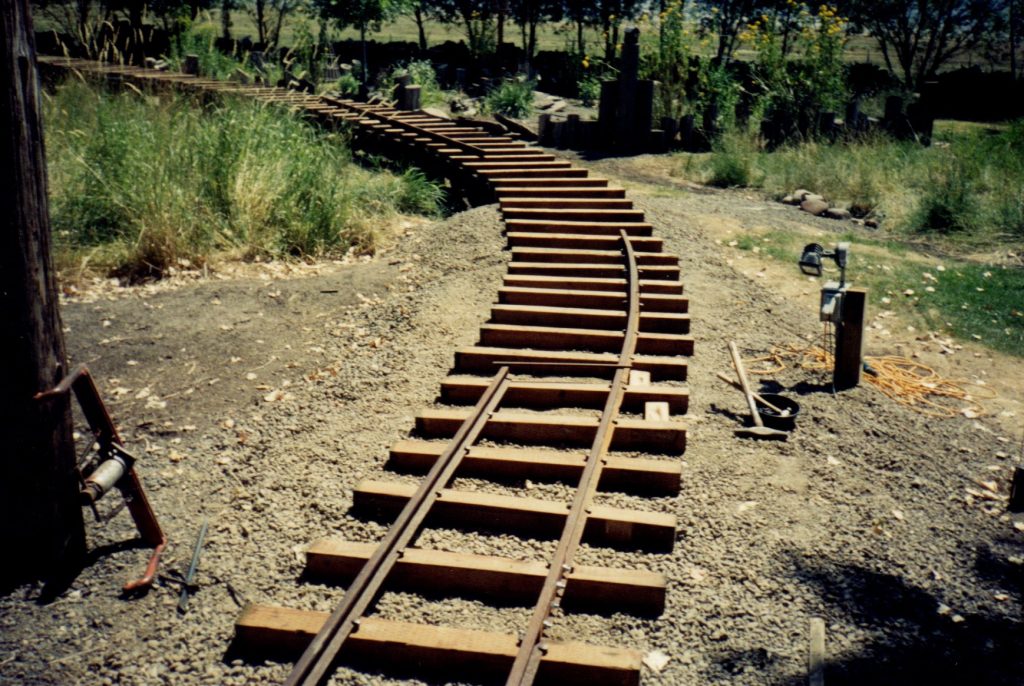
When school was dismissed in early June, Stephen started laying rail under the Observation Tower. Here the rail has passed under the tower and is approaching the trestle. To the right of the track you can see one of the light posts that Stephen installed in 1999. Each light post also has an outdoor GFI plug which allowed Stephen to plug in power tools as he progressed along the right-of-way.
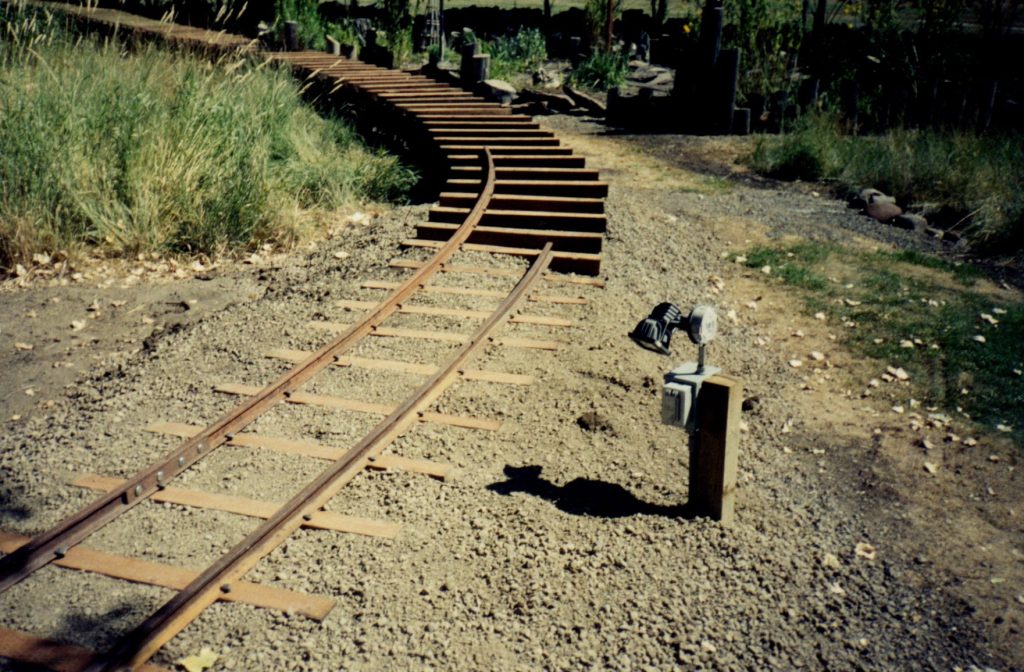
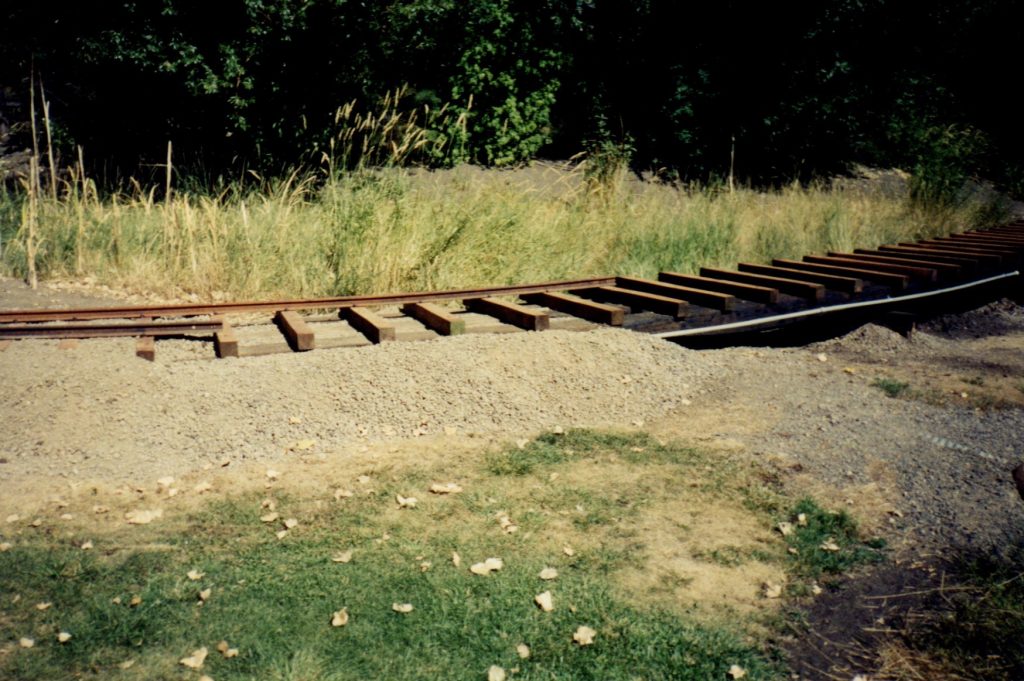
In the photos above the rail has reached the curve of the trestle.
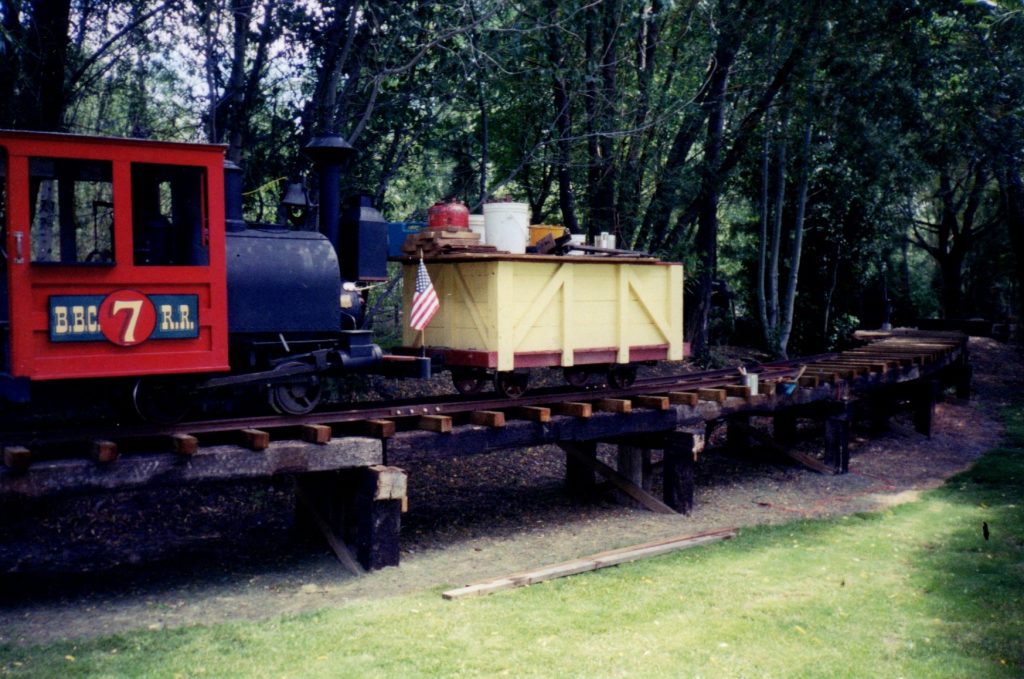
When Stephen started laying rail on the sloping trestle, he used his “work train”. He used the train engine to push his work car up the trestle as work progressed. The Porter style engine has a coupler at the front of the engine, as well as the rear. So train cars can be attached to the engine’s front or back.

The rail gradually creeps up the trestle. This view shows the rail bender in place on the rail. Bending rail is a slow, tedious process. Some rail is light weight enough to just bend it and spike it down. If you do this, the rail will eventually “walk” as the rail expands and contracts. If you take the time to bend the rail properly, it stays permanently in place. In the fourteen years (as of 2018) that the rail has been in place, Stephen has not had to redo a single section of rail.
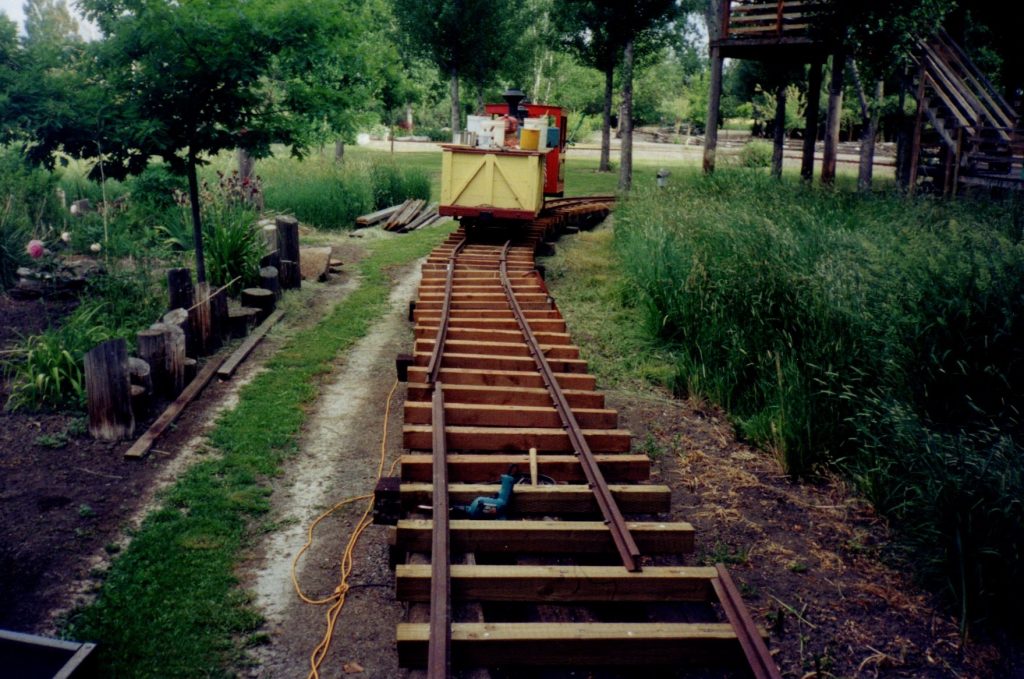

In these two photos, the rail climbs the trestle past the Cottage Garden.
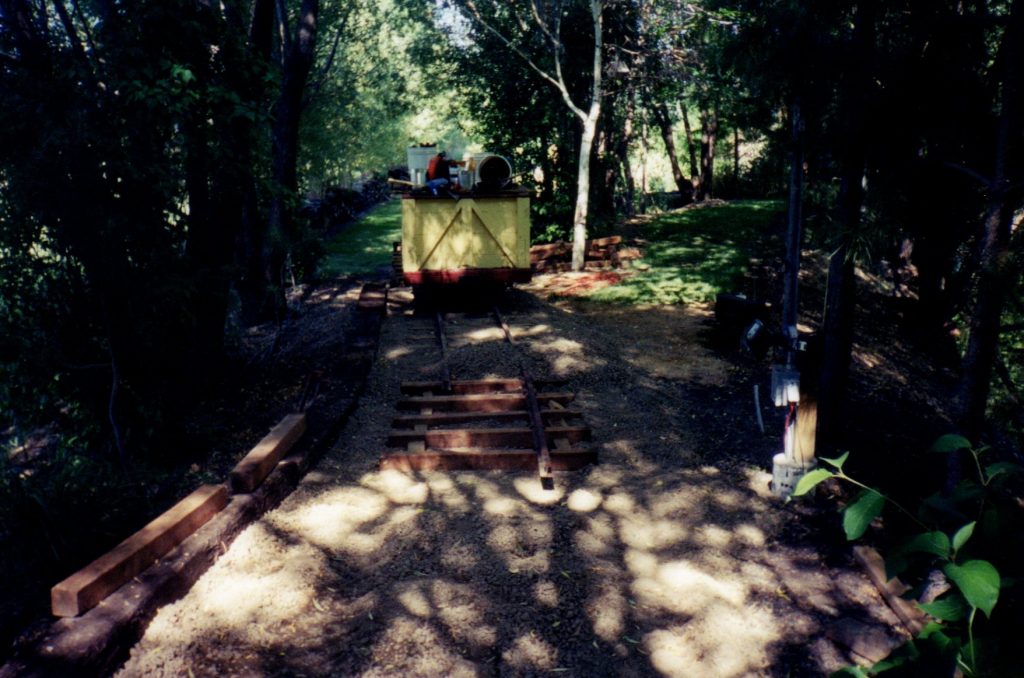
After weeks of work, the work car finally reaches the top of the trestle at the west end of the large pond.
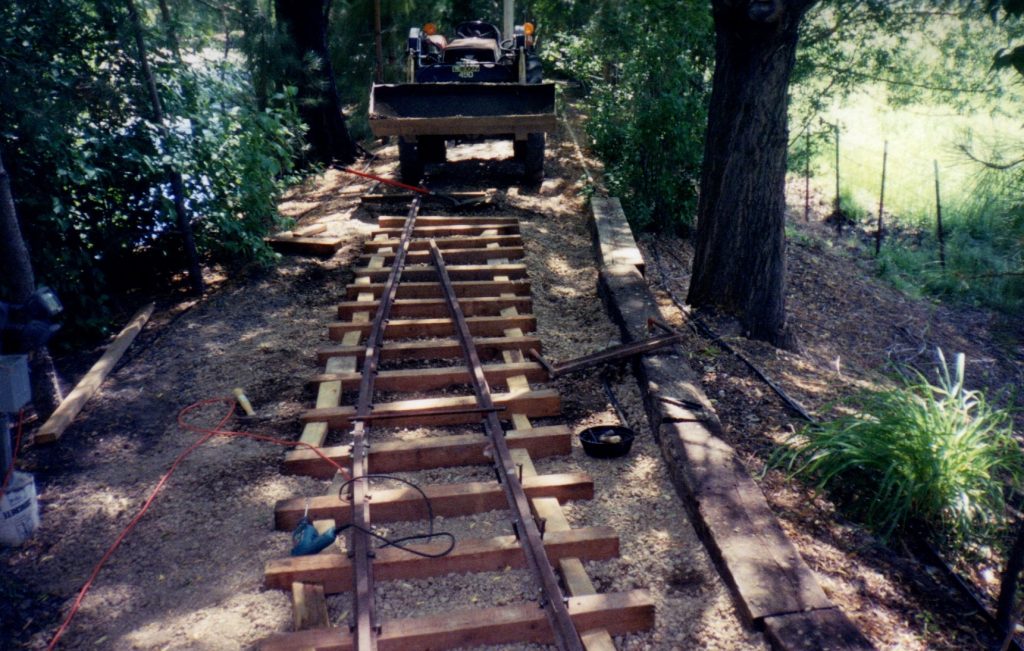
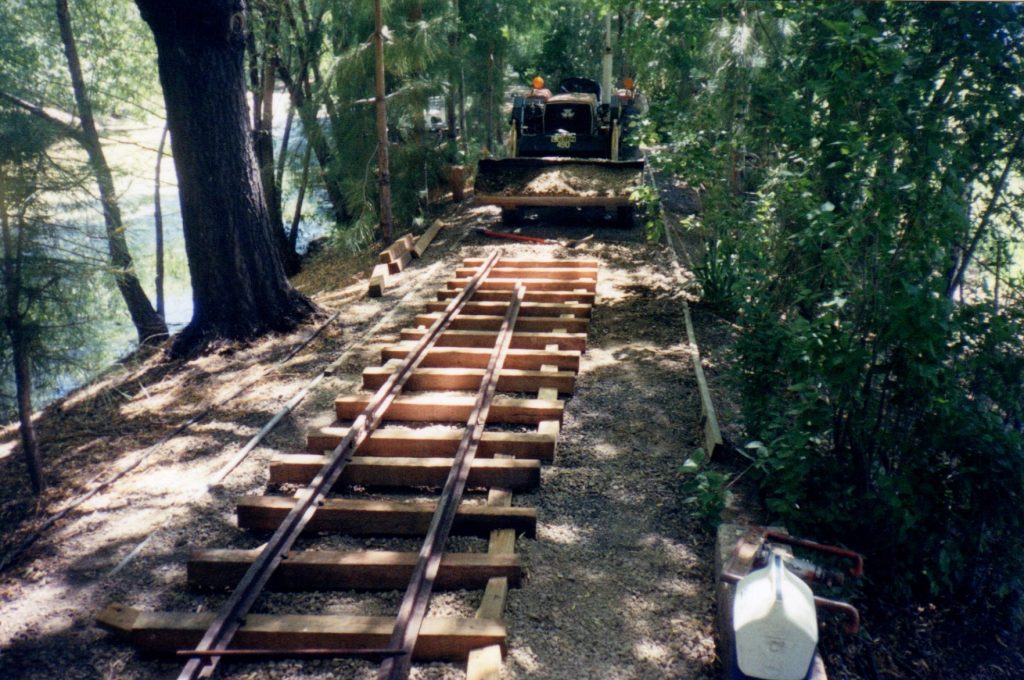
Working on the south side of the pond was very time consuming, because every time Stephen needed another load of road base (and this happened many times during a typical day), he had to back his tractor up the entire length of pond. After loading another bucket of road base, he had to drive all the way back down to the work location. As the track made progress heading east along the pond, the trip to the road base pile got shorter.
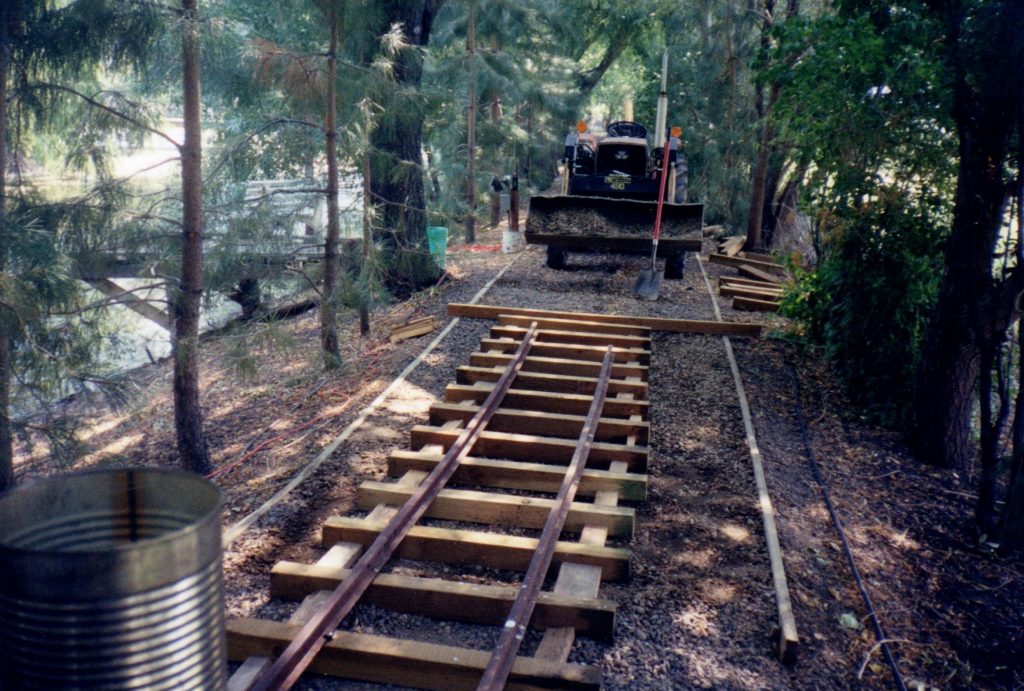
Even after the roadbed had been leveled, Stephen had to hand shovel road base to keep the railroad ties level. As he pounded the spikes, the vibration would cause the roadway to settle.


These two photos illustrate the length of track on the south side of the pond. In the first photo the work train has made it around the curve at he top of the trestle looking east. The second photo shows the view from further down the roadbed looking west. You can see the work train in the distance where it has reached the end of the completed track.
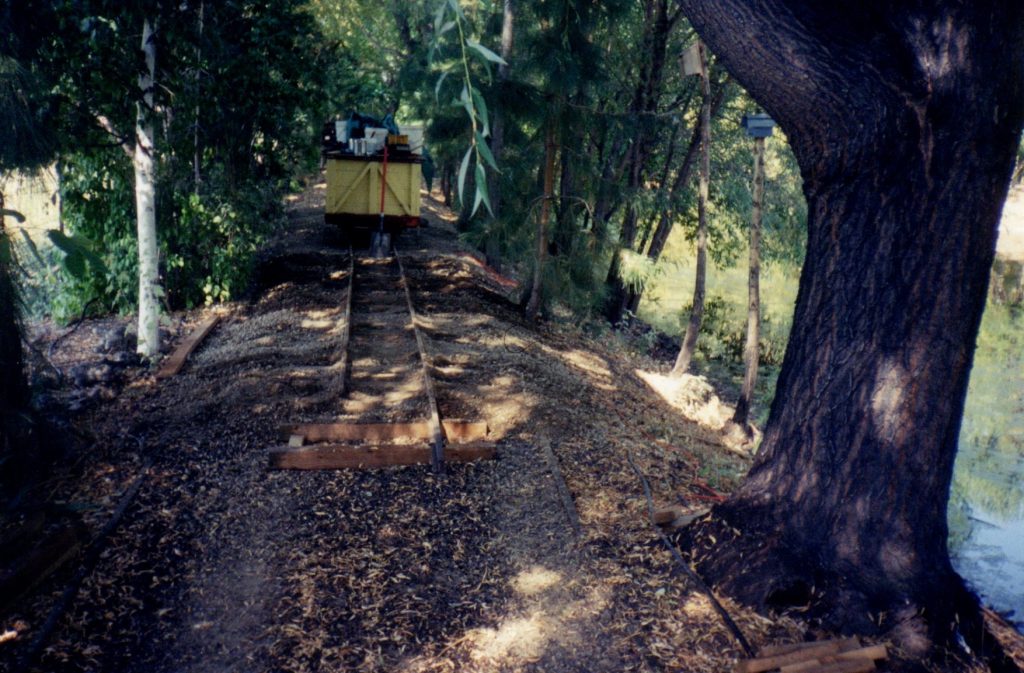
About halfway down the south side of the pond, Stephen has just dumped road base on top of the rails and ties. He then hand leveled the road base between the rails and on the sides.
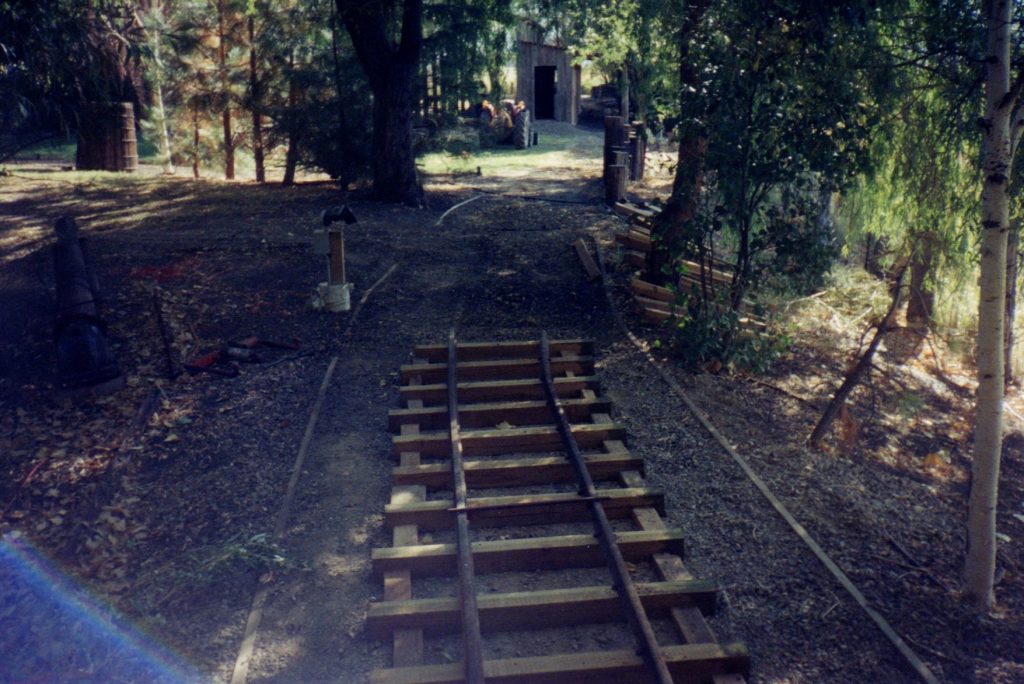

Toward the end of July the rail finally passes the end of the pond and heads down to the Aviary. This is location that the railroad loading platform would be built.
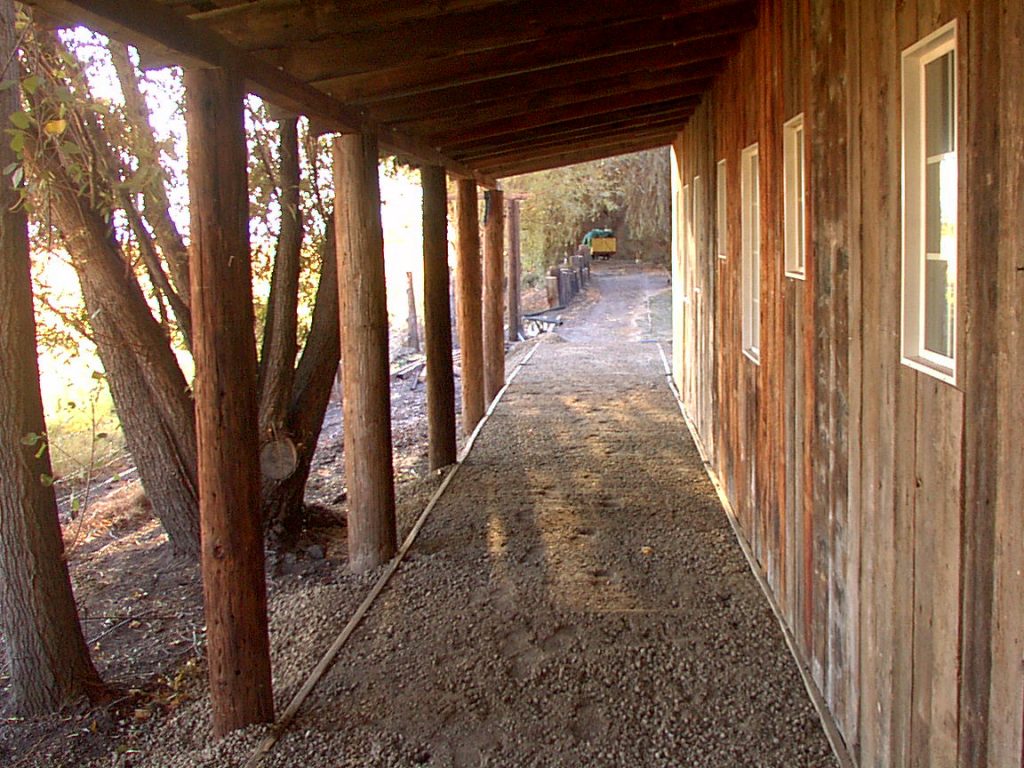
The work train reaches the top of the slope leading down to the loading platform and Aviary.
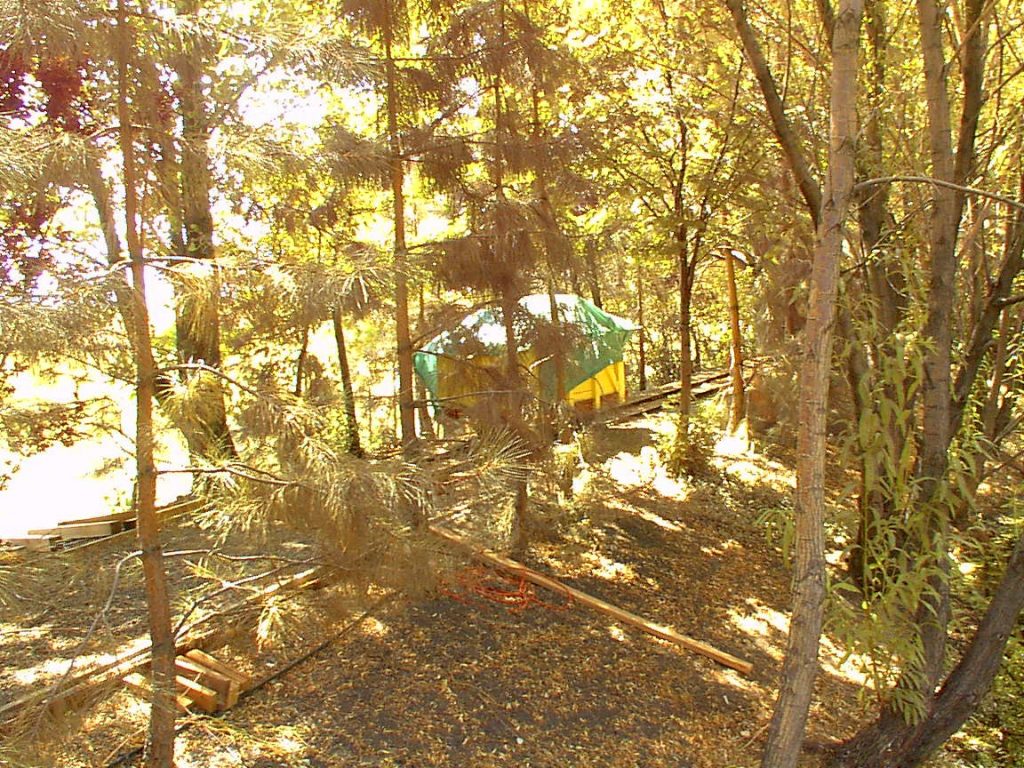
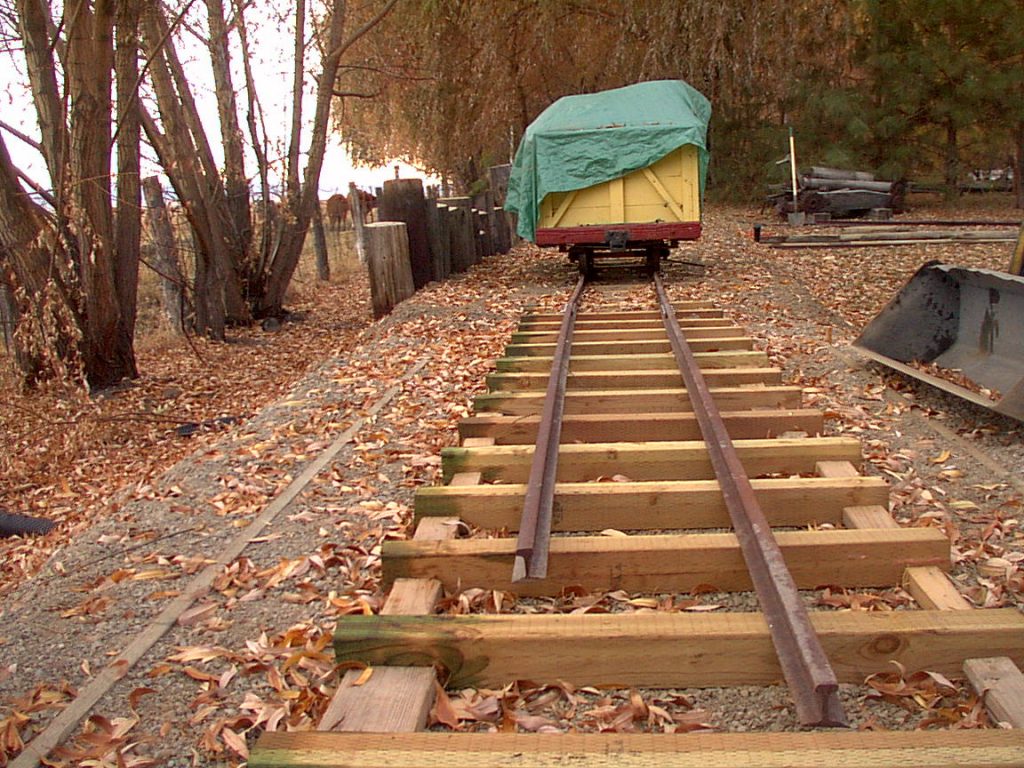
Each evening Stephen would leave the work car in place and cover it with a tarp in case of inclement weather. This also kept the leaves at the end of August from mixing with the tools in the work car. In the right hand photo, the track has reached the eventual loading platform.
